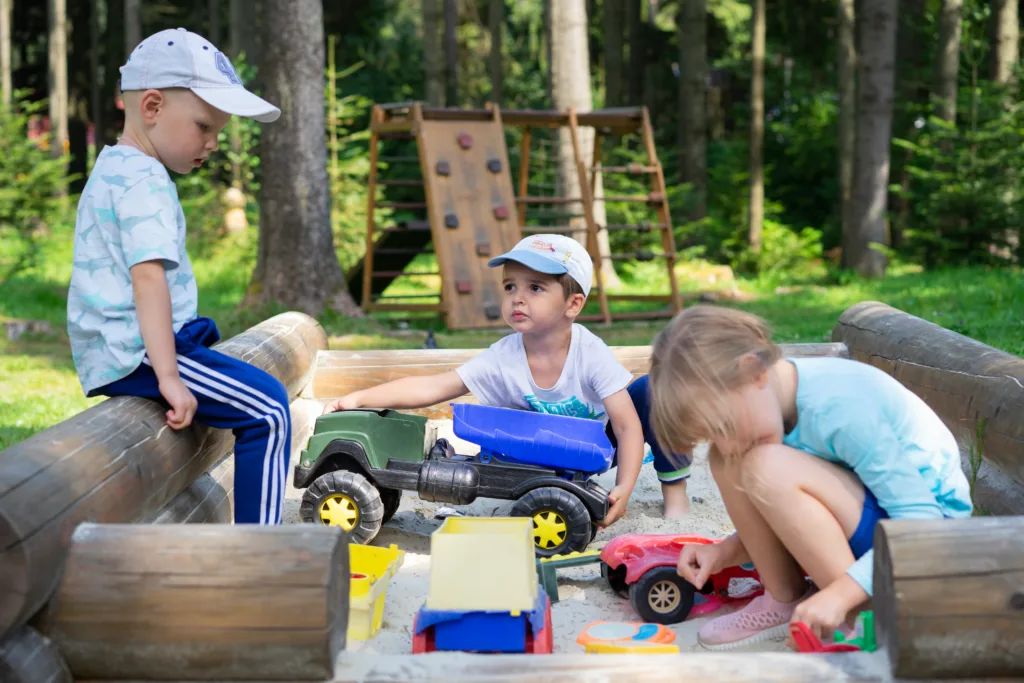Niche-picking is a process in which individuals actively seek out environments that match their genetic propensities. As children grow older, they start to play an active role in their environment, seeking out settings that are suited to their abilities. This phenomenon of gene-environment correlation (rGE) has been extensively studied in psychology.
There are three types of rGE: passive, evocative/reactive, and active. Passive rGE refers to the association between a child’s genes and the environment provded by their parents. For example, parents who are highly educated are more likely to provide a stimulating environment for their children, which in turn may influence their children’s cognitive abilities.
Evocative/reactive rGE refers to the association between a child’s genes and the way they interact with their environment. For example, children who are naturally outgoing may evoke more social interactions from their peers, which in turn may reinforce their outgoing behavior.
Active rGE, on the other hand, refers to the association between a child’s genes and the environments they actively seek out. For example, outgoing children tend to seek out social contexts in which to interact with people, whereas shy children may avoid such contexts.
Niche-picking has important implications for child development. Children who are able to find environments that match their abilities are more likely to experience positive outcomes. For example, children who are naturally athletic may excel in sports, which in turn may boost their self-esteem and confidence.
However, niche-picking can also have negative consequences. Children who seek out environments that reinforce maladaptive behaviors may experience negative outcomes. For example, children who are naturally aggressive may seek out contexts in which aggression is rewarded, which in turn may reinforce their aggressive behavior.
Niche-picking is an important aspect of gene-environment correlation. Children who are able to find environments that match their abilities are more likely to experience positive outcomes. However, niche-picking can also have negative consequences if children seek out environments that reinforce maladaptive behaviors. Understanding the complex interplay between genes and environment is crucial for promoting positive child development.
What Is Active Niche-picking Genotype Environment?
Active niche-picking genotype-environment correlation can be defined as the tendency of individuals to seek out and select environments that are compatible with their genetic predispositions. In other words, individuals with certain genetic traits are more likely to select environments that are conducive to the expression of those traits. This correlation can be observed across a wide range of traits, including personality, intelligence, and physical abilities.
Some examples of active niche-picking include individuals who are genetically predisposed to athleticism selecting sports or physical activities that allow them to excel, or individuals with a high degree of intelligence seeking out intellectually stimulating environments like universities or research institutions. Conversely, individuals who do not possess thse genetic traits are less likely to select these types of environments.
Active niche-picking can also have important implications for the development of certain traits. For example, individuals who are genetically predisposed to aggression may seek out environments that are more violent or aggressive, which can in turn reinforce and amplify these traits over time.
Active niche-picking genotype-environment correlation is an important factor to consider when examining the complex interplay between genetics and the environment in shaping individual traits and behaviors.

Is Niche-picking Active Or Passive?
Niche-picking is an active process that occurs as children grow and develop. It involves seeking out environments that align with teir personalities, interests, and preferences. This process is driven by the child’s own initiative, rather than being passive or predetermined by external factors. As children gain more autonomy and agency, they become increasingly skilled and intentional in choosing the settings and activities that best suit them. This active engagement with the world around them plays a crucial role in shaping children’s development and identity formation. Therefore, niche-picking can be considered a proactive and dynamic process rather than a passive or static one.
What Are 3 Types Of Heredity Environment Correlations?
Gene-environment correlation is a phenomenon where a person’s genes influence their exposure to various environmental factors. There are three types of gene-environment correlations, which are known as passive, evocative/reactive, and active.
1. Passive gene-environment correlation: This type of correlation occurs when a child’s genes and environment are both influenced by their parents. For example, if parents who are genetically predisposed to athleticism provde their child with an environment that encourages physical activity, the child will have a genetic and environmental advantage for sports.
2. Evocative/reactive gene-environment correlation: This type of correlation occurs when a person’s genes influence their behavior, which in turn evokes certain environmental responses. For example, a child who is naturally outgoing and sociable may receive more attention and social interaction from their environment, which can further enhance their social skills.
3. Active gene-environment correlation: This type of correlation occurs when a person’s genes influence their choice of environment. For example, a person who is genetically predisposed to enjoy music may actively seek out musical experiences and environments, such as joining a band or attending concerts.
Gene-environment correlation is a complex phenomenon that involves the interaction between a person’s genes and their environment. The three types of gene-environment correlations are passive, evocative/reactive, and active, each with their unique mechanisms and consequences.
What Is Niche-picking Quizlet?
Niche-picking, according to the online learning platform Quizlet, refers to the process of individuals finding and selecting settings that are aligned with their personal abilities, characteristics, and preferences. This concept suggests that people tend to seek out environments that cater to their unique qualities, such as extroverted individuals preferring social contexts to interact with others, while introverted individuals may opt for more solitary activities. Niche-picking is a common phenomenon in many areas of life, including education, work, and social relationships, where individuals tend to gravitate towards environments that fit their unique personalities and skill sets.

Conclusion
Niche-picking is a crucial process in human development, wheeby individuals seek out environments that match their genetic propensities. This process is particularly evident in children as they age and become more independent in their choices. By selecting settings that are suited to their abilities, individuals can enhance their chances of success and fulfillment in life. The phenomenon of gene-environment correlation (rGE) further underscores the importance of niche-picking, as genes can influence individual variations in exposure to adverse or protective environments. niche-picking is a dynamic and complex process that plays a vital role in shaping human development and underscores the importance of understanding the interplay between genes and environment in shaping our lives.
